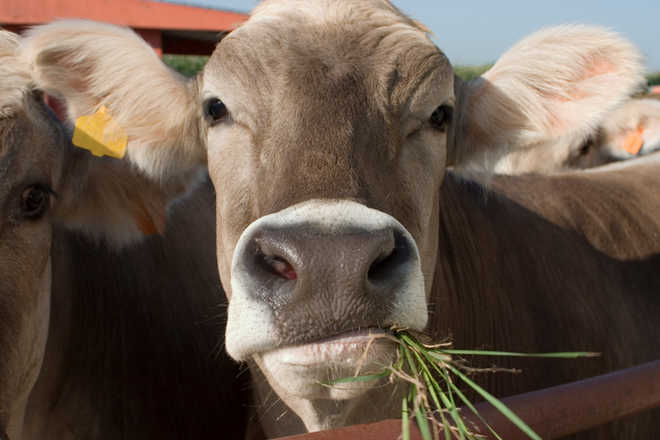
iStock
Washington, March 27
Mammal teeth, jaw bones and muscles evolved to produce cow-like chewing motions, allowing our earliest ancestors eat a more diversified diet, which helped them survive the mass extinction nearly 66 million years ago, a new study has found.
The terms "pitch" and "yaw" usually describe movements of airplanes, but biologists also use them to describe basic movements of body parts such as the jaw.
Pitch rotation results in basic up and down movement, and yaw rotation results in side-to-side, crosswise motion like a cow munching away on grass.
Almost all modern mammals, including placental mammals, like humans and deer, and marsupials, like kangaroos and opossums, share similarities in their jaw structures and musculature that allow for both pitch and yaw movements.
This allows mammals to have especially diverse diets today, from cutting pieces of meat to grinding tough plants and vegetables. For early mammals, these characteristics meant they could be more resourceful during tough times.
"If you have a very specialised diet you're more likely to perish during a mass extinction because you're only eating one thing," said David Grossnickle, graduate student at the University of Chicago in the US.
"But if you can eat just about anything and 90 per cent of your food goes away, you can still live on scraps," he said.
Using 2D images of early mammal fossils from previous publications and 3D data collected from modern specimens at the Field Museum, Grossnickle analysed the structure of teeth, jaw bones, and how the muscles that control them were attached to the skull.
He saw that as species began to develop a projection on the upper molars that fit into a corresponding cup or basin on their lower counterparts, the musculature of the jaw also changed to provide greater torque for side-to-side yaw movements.
This way the animal could grind its food between the molars like a mortar and pestle, as opposed to cutting it with simple up and down pitch movements. — PTI


























